Balochistan Finds Its Voice
In Pakistan and Iran, a grassroots women-led movement gives hope to millions of stateless people.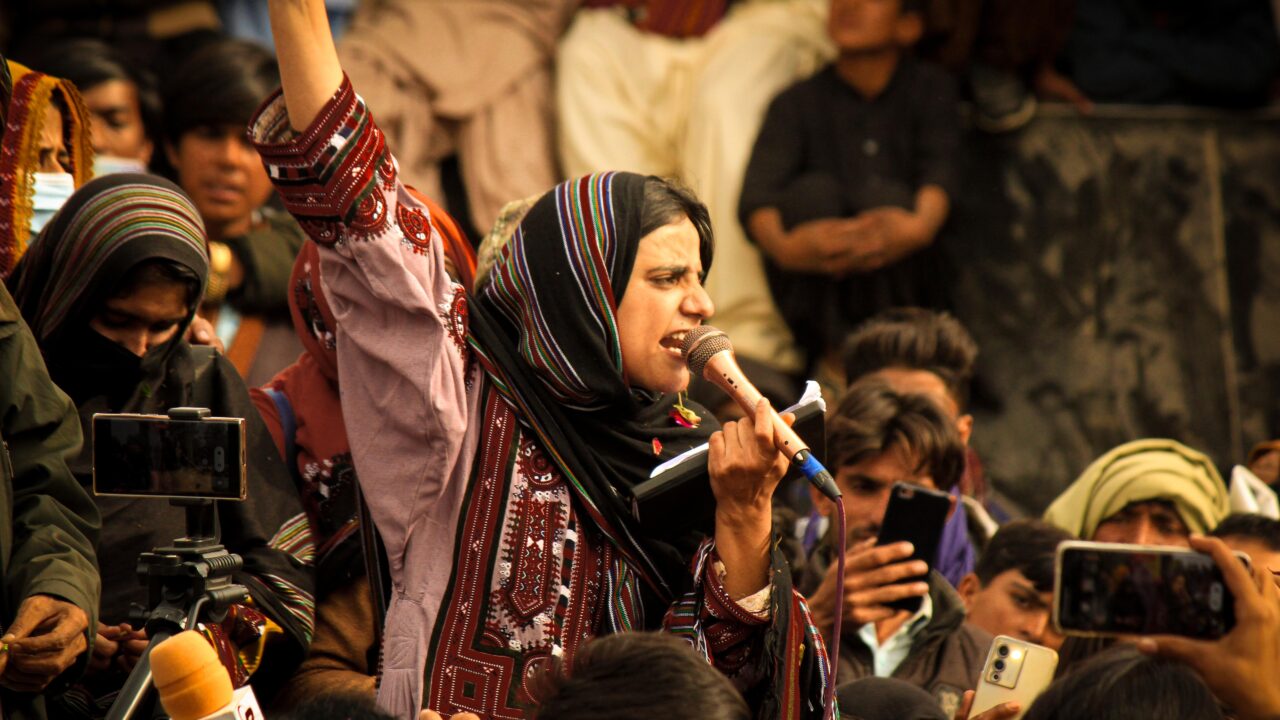 Dr. Mahrang Baloch (above) has won unprecedented support throughout Balochistan—spearheading a unique women-led movement. (Courtesy of Dr Mahrang Baloch)
Dr. Mahrang Baloch (above) has won unprecedented support throughout Balochistan—spearheading a unique women-led movement. (Courtesy of Dr Mahrang Baloch)
When the young activist Dr. Mahrang Baloch returned to her native Balochistan from Islamabad on Jan. 27, a westward journey of more than 500 miles through the biting Pakistani winter, she was met with a hero’s welcome. In defiance of a government ban on public assemblies, the Baloch people had gathered by the tens of thousands in an unprecedented show of solidarity to greet her and several hundred of her fellow marchers, more than half of them women and children. Amid a shower of roses, Mahrang spoke of smelling “the fragrance of revolution” and witnessing the birth of a movement representing “the voice of all repressed Baloch.”
Long divided among invading empires, the mountainous Baloch homeland has been occupied by Pakistan, Afghanistan and Iran since the mid-20th century. Similar to the Kurds, 10 million ethnic Baloch face regimes of violent repression targeting their identity and language. But unlike the Kurds, the Baloch have remained almost completely out of global public view and have never experienced even the fleeting strategic attention of powerful nations. Despite decades of massacres, assassinations and executions in Iran and Pakistan, harsh restrictions make it almost impossible for foreign press to enter either region.
Mahrang’s father suffered the tragic fate common to those who challenge this state of affairs. A Baloch National Party leader, he was kidnapped outside a hospital in 2009; two years later, his mutilated corpse was found dumped on a remote roadside outside of Karachi. His name was added to thousands of other Baloch activists that Pakistani authorities have systematically abducted, tortured to death and dumped in the Dasht Quetta graveyard — a policy known as “kill and dump.” Mahrang rose to national prominence during her teenage years seeking justice for her father and other disappeared Baloch. She has since emerged as a strong voice of protest over securitization and resource extraction in the region, and has won protections for Baloch students through a series of hunger strikes.
In calling for an end to military occupation, economic exploitation and discrimination, the Baloch women-led civil society movement echoes the political program advocated by the stateless Kurdish freedom movement.
Courageous female activists like Mahrang are challenging Pakistani suppression of Baloch voices. Since first being detained at 13, Mahrang, now 28, has been holding ever-larger demonstrations on behalf of disappeared Baloch activists and politicians. Speaking from the Baloch city of Quetta, Mahrang says the march to Islamabad and massive protests have “broken the chains of fear” for her people in Pakistan and Iran, where the minority has joined Kurds and other Iranians to lead the ‘Women, Life, Freedom’ movement protesting misogynistic state violence.
The Kurd-Baloch solidarity in Iran is not surprising. In calling for an end to military occupation, economic exploitation and discrimination, the Baloch women-led civil society movement echoes the political program advocated by the stateless Kurdish freedom movement. But in the face of ongoing violent state repression and a global media blackout, do Mahrang and her movement stand a chance?
The Baloch are a nomadic, pastoral people who have been occupied and divided since their independent tribal state was occupied by the British in 1839. Today, around 7 million Baloch live in modern-day Pakistan; another 2 million live in Iran and smaller minorities in Afghanistan and elsewhere. “Due to Balochistan’s strategic location, the Baloch nation has been resisting foreign occupiers for several centuries,” says exiled activist Nobat Marri Baluch of the Free Balochistan Movement.
Following the bloody 1947 British-backed territorial division of India known as the Partition, the newly-formed Pakistan seized control of Balochistan. Although the largest region in Pakistan and rich in natural resources, it is also the least populous, poorest and least educated. Its regional growth rate lags behind the rest of the country even as the Pakistan government profits from its oil and mineral reserves. Were Balochistan a country, it would rank in the bottom 10 globally for women’s education. Maternal mortality is three times worse than in the rest of Pakistan; 60% of women are married in their teens, and only 5% are in the labor market. The recent transfer of foreign workers into the region and China’s takeover of its crucial deep-sea port has deepened the feeling among Baloch that their land constitutes an “internal colony.”
Since the 1940s, multiple waves of Baloch freedom movements have sought greater autonomy. They have used a variety of approaches, from mass protest and the ballot box to the bullet. Since 2003, heavy civil-society repression and the forced disappearances of outspoken national representatives have pushed many Baloch to join or support two armed resistance groups, the Baloch Liberation Army and Baloch Liberation Front. These groups, says exiled Baloch journalist and Washington-based analyst Malik Siraj Akbar, attack moderates by asking, “How much progress have you made in 70 years?”
But if political approaches have not worked to advance Baloch freedom and autonomy, neither has armed resistance made much headway against Pakistani occupation and economic exploitation. In response to the challenge of these groups, the Pakistani authorities have deployed some of their vast U.S. military aid to pin down the Baloch opposition. Given Pakistan’s well-known role in sheltering and supporting countless thousands of al-Qaeda and Taliban insurgents, perhaps the funds could have been better used elsewhere.
Like the country’s Kurds, Iran’s Baloch have long been denied basic rights. Scores have been executed in recent years, often on what activists say are discriminatory drug-related charges.
Pakistan’s recent elections were seen as a power struggle between recently deposed right-wing populist Imran Khan and a candidate backed by the powerful military that has long dominated Pakistani politics. “In the past, when the Baloch pointed to the political role of the military, abducting and torturing, other people thought it was a unique problem to Balochistan,” says Akbar. “But now they see how the military can be.”
In a familiar pattern, insurgent violence — from both Baloch nationalists and Islamist groups — justifies a military occupation breeding further violence. In the days prior to the election, two bomb explosions claimed by the regional wing of Islamic State killed 28 people near candidates’ offices in Balochistan, followed by a state-imposed lockdown and internet blackout. Whatever the outcome of the elections, the military looks set to retain its firm grip on the country’s most troubled region.
In the neighboring Islamic Republic of Iran, meanwhile, the repression is equally intense. Like the country’s Kurds, Iran’s Baloch have long been denied basic rights. Scores have been executed in recent years, often on what activists say are discriminatory drug-related charges. Shortly after the country was rocked by massive demonstrations over security forces’ brutal killing of young Kurdish woman Jina “Mahsa” Amini for a hijab infraction, security forces raped a 15-year-old Baloch girl; later they opened fire on unarmed protesters, killing around 100. In recent decades, some Iranian Baloch have been pushed into joining Sunni Islamist groups opposed to the Shia theocracy. On both sides of the border, many Baloch have concluded there is no alternative to desperate armed struggle.
Despite waves of Baloch protest in Pakistan and Iran, the legal path to greater rights and autonomy remains fundamentally obstructed in both countries. In the former, a generation of political activists has been liquidated, with the militarized Pakistani state systematically engaged in the extrajudicial killing of political and human rights workers believed to number in the thousands since 2009. But it was the killing of alleged Baloch militant Balaach Mola Bakhsh in November 2023 that sparked a renewed wave of outrage, and a march on Islamabad uniting a diverse cross-section of Baloch society. It was followed by one of Balochistan’s largest-ever political gatherings, organized from the ground up by grassroots female activists.
“At a young age, I had to leave my home and school to join protests and be present at courts and commissions,” says Sammi Deen Baloch, an activist whose father was seized from the hospital where he worked in 2009 and has been missing ever since, likely a victim of the kill-and-dump policy. “I’ve spent most of the days of my life demanding the safe release of my father and others. Fourteen years later, my mother still doesn’t know whether she’s a widow or not.”
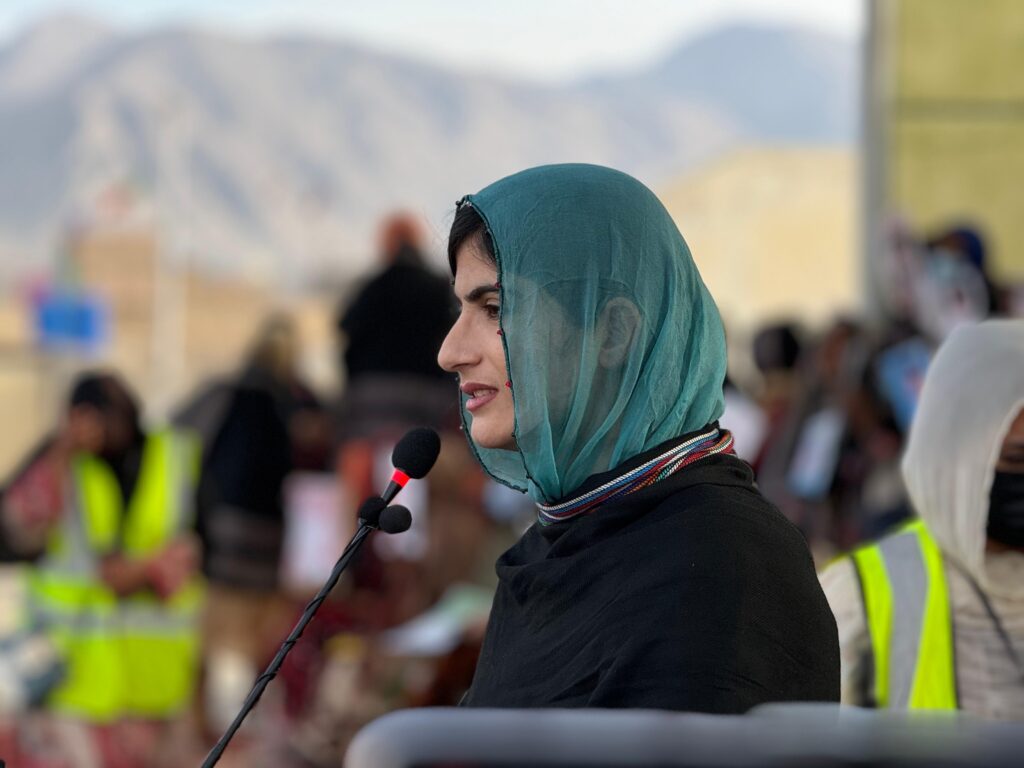
Mahrang says that while women like herself and Sammi have long played prominent roles in Baloch society, “the [Pakistani] state employs its machinery to confine women to their homes. Girls’ schools have been converted into military camps and religious extremism has further oppressed women. As women emerge and take leading roles, it encourages thousands of Baloch women to join this mass resistance movement.”
Before and during their December 2023 march on Islamabad[6] , Mahrang and other Baloch activists faced harassment, physical attacks, degrading treatment and death threats from state authorities who describe them as “fallen” women and who strip them of their headscarves upon arrest. Given the severe challenge Baloch women face in a conservative region where women’s public visibility is highly limited, it’s remarkable that women and children have shown up in such numbers to protests led by a dynamic female figurehead.
While keeping the focus on the disappearances and militarization of the Baloch regions, Mahrang says the movement has not forgotten the broader goals sought by both the armed and parliamentary wings of earlier Baloch nationalist movements. These goals include, she says, “eliminat[ing] the fear of enforced disappearances, extrajudicial killings, forced evictions and military operations; access to quality education and healthcare; and economic freedom for the Baloch people, with no restrictions on their language, culture or customs.”
Other figures in the Baloch movement go further, arguing directly for an end to what Sammi Deen calls a “system of imperialism and colonization.” A third of Baloch people support independence; two-thirds back calls for greater autonomy. Short of independence, the broader, progressive goals articulated by Mahrang could one day contribute to a more equitable, democratic settlement granting greater autonomy for Balochistan, and a more inclusive political culture throughout Pakistan. Certainly, the recent election demonstrated widespread public anger over military influence on the country’s political system.
But as the violence endured by the Kurdish and Palestinian peoples demonstrates, stateless people face long odds in their struggle to achieve autonomy, never mind independence. For many Baloch observers, tit-for-tat January airstrikes by Pakistan and Iran targeting Baloch militant groups on both sides of the border prove that they are easy targets in the proxy wars sparked by Israel’s invasion of Gaza. (Kurdish parties have similarly suffered recent strikes by Iran and Iran-backed groups.)
Analyst Akbar believes the deepening confrontation between U.S. and Iranian spheres of influence is unlikely to bring opportunities for the Baloch to advance their interests. “Countries use human rights selectively, and the Baloch movement doesn’t have any support from any state — not even from Pakistan’s known enemies like India and Afghanistan,” he says. “Iran and Pakistan have always cooperated to punish the Baloch.”
As in Syria, women-led movements with courage and national support could, over time, change the political equations in Pakistan and Iran.
Should Washington be tempted into baiting Iran in the region, it would likely do so by sponsoring Islamist Baloch groups, not secular, leftist alternatives. In its efforts to clear a path for the region beyond Islamic extremism and strongman authoritarianism, Mahrang’s movement will have to do so without any expectations of foreign state support. In place of external support, Baloch activists like Sammi Deen and Mahrang have found solidarity with the other minority groups of Pakistan, as well as Kurds, Palestinians, Afghans and others in what Mahrang calls the “global joint struggle among subjugated nations, fostering unity in the face of shared challenges.”
The feeling is mutual. Ruken Ahmed, a member of the diplomacy committee for Kurdish women’s movement Kongra Star, notes multiple parallels between the two stateless peoples “divided by artificially drawn state borders.” During the Women, Life, Freedom protests, Iranian streets rang with memorable chants about the brotherhood of Kurds and Baloch. “When we hear about state disappearances, about mass graves, about assimilation and genocidal policies, about mothers asking for their disappeared children, about the exploitation of natural resources, then we see again the situation in which we Kurds find ourselves,” she says. It remains possible that confrontation between regional powers could throw up unexpected opportunities for the Baloch, with external clashes shaking the repressive foundations of the authoritarian states that occupy their homeland. This was the case in Syria, where civil war and state collapse provided the Kurds with an unexpected opening to push back against state oppression and establish a democratic, stateless alternative. And as in Syria, women-led movements with courage and national support could, over time, change the political equations in Pakistan and Iran. The Baloch nation has announced its eagerness to be part of such change, and stands united behind young female leaders like Mahrang and Sammi. What that unity can accomplish remains to be seen.
Your support is crucial…With an uncertain future and a new administration casting doubt on press freedoms, the danger is clear: The truth is at risk.
Now is the time to give. Your tax-deductible support allows us to dig deeper, delivering fearless investigative reporting and analysis that exposes what’s really happening — without compromise.
Stand with our courageous journalists. Donate today to protect a free press, uphold democracy and unearth untold stories.
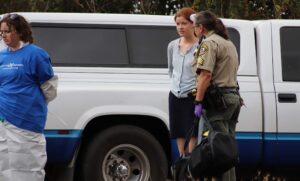

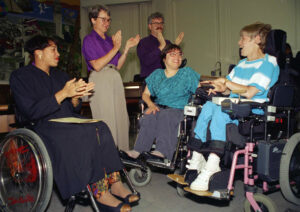
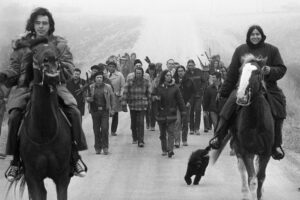
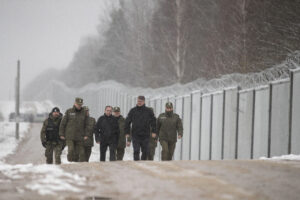
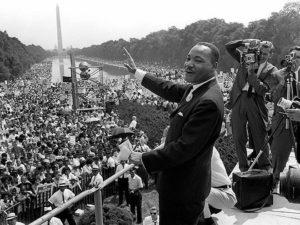
You need to be a supporter to comment.
There are currently no responses to this article.
Be the first to respond.